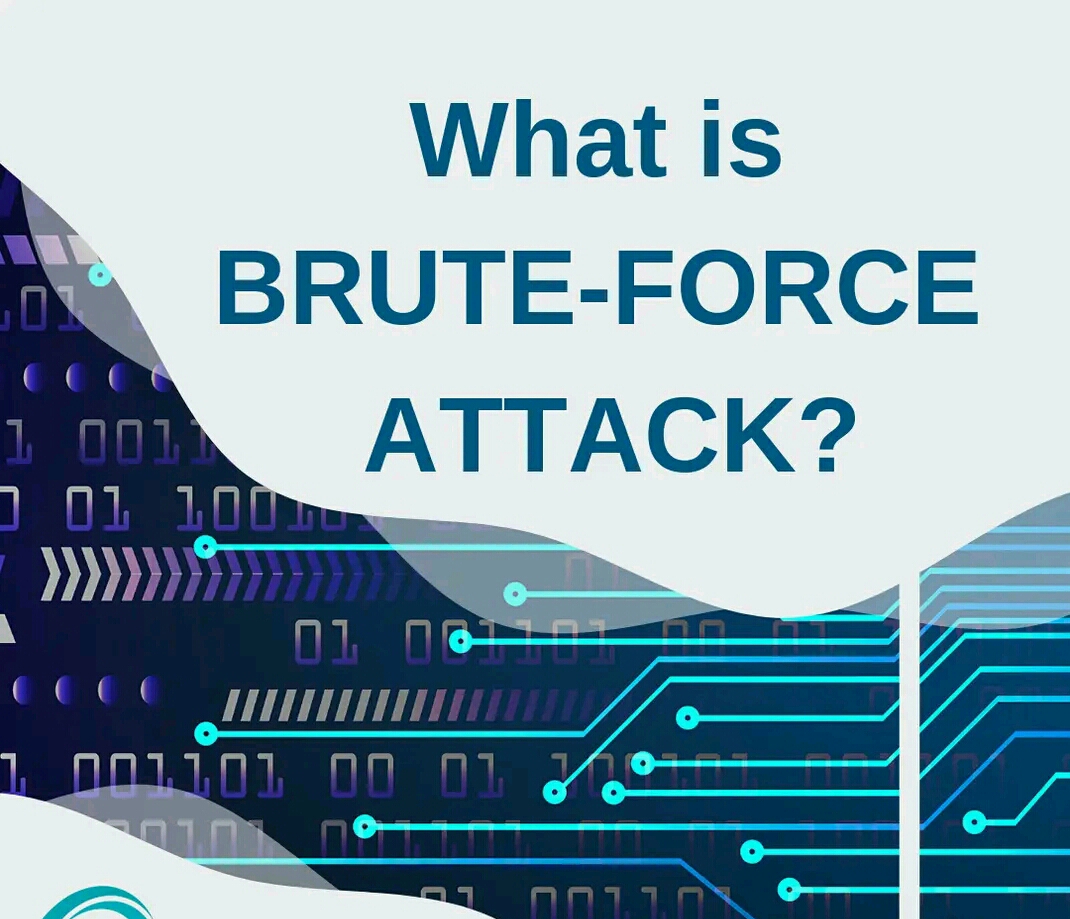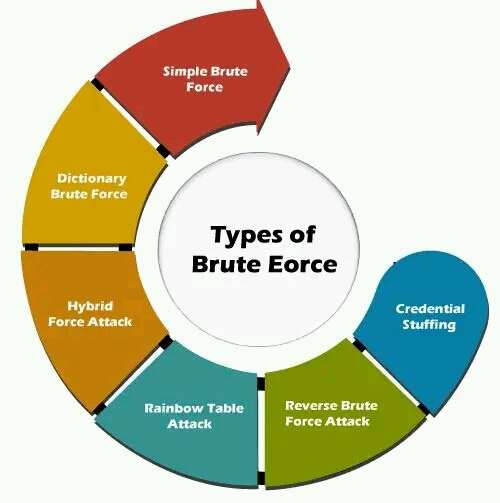What Is Brute Force Attack And 25 Ways to Prevent It?

What Is Brute Force Attack And 25 Ways to Prevent It?
A brute force attack is a type of cyber attack in which a computer program or script automatically and systematically attempts to guess the correct login credentials for a particular website or service.
This is typically done by trying a large number of possible combinations of characters for the username and password until the correct combination is found. These attacks can be very time-consuming and often require a significant amount of computing power, but they can be successful if the login credentials are weak or easily guessable.
A brute force attack can also be applied to other types of encryption, such as cracking a password-protected zip file, or a password-protected windows account.

The attacker uses a script or program to systematically try every possible combination of characters until the correct one is found. Depending on the length and complexity of the password, this process can take a significant amount of time and computing power.
To protect against brute force attacks, it is important to use strong, unique passwords that are not easily guessable.
Additionally, many websites and services will lock an account or temporarily ban an IP address after a certain number of failed login attempts, which can help to prevent brute force attacks from being successful.
It’s important to note that these attacks are not limited to just login credentials, but can also be applied to various encryption, like cracking encrypted files and also cracking password-protected windows account, or can be used to decrypt hash.
A brute force attack can also be applied to cracking encryption algorithms, such as those used to secure communications or to protect sensitive data. In this type of attack, the attacker uses a computer program or script to systematically try every possible key or decryption algorithm until the correct one is found. This can be a very time-consuming and computationally expensive process, but if the encryption is weak or the key is short, it can be successful.
Another variation of brute force attack is called a “dictionary attack” where the attacker uses a pre-defined list of words, phrases, or common passwords to try and guess the correct login credentials. This type of attack can be more efficient than a traditional brute force attack because it focuses on trying commonly used or easily guessable passwords.
It’s important to note that brute force attacks can be mitigated through the use of strong encryption and long, complex keys. Additionally, using a technique called “salting” can add an additional layer of security to hashed passwords and make them more resistant to brute force attacks.
It’s also important to mention that the rise of cloud computing and the ability to rent computing power has made brute force attacks more powerful and efficient than ever before, so it’s crucial to be vigilant and take the necessary precautions to protect yourself and your organization from these types of attacks.
What Is Brute Force Attack And 25 Ways to Prevent It?

How to Prevent Brute Force Attack?
There are several ways to prevent brute force attacks:
1. Use strong and unique passwords for all accounts.
2. Implement rate limiting to limit the number of login attempts from a single IP address.
3. Use two-factor authentication to add an extra layer of security.
4. Regularly monitor login attempts and suspicious activity on your accounts.
5. Use a web application firewall (WAF) to block malicious traffic and IP addresses.
6. Consider using a password manager to generate and store unique and complex passwords.
7. Regularly update your software and security systems to protect against known vulnerabilities.
8. Use a CAPTCHA to ensure that login attempts are made by a human, not a bot.
9. Restrict access to your network and resources to only authorized users and devices.
10. Use security solutions such as intrusion detection and prevention systems (IDPS) to detect and block malicious traffic.
11. Educate your employees and users about the importance of security and the potential dangers of brute force attacks.
12. Regularly perform security audits and penetration testing to identify and address vulnerabilities in your systems.
13. Have an incident response plan in place in case of a security breach.
14. Use network segmentation to limit the scope of a potential compromise and make it harder for attackers to move laterally within the network.
15. Use encryption to protect sensitive data and communications.
16. Use security solutions such as honeypots to detect and distract attackers from your production systems.
17. Use security solutions such as biometrics to add an extra layer of authentication.
18. Use security solutions such as security information and event management (SIEM) to collect, analyze, and alert on security-related data from multiple sources.
19. Use security solutions such as security orchestration, automation and response (SOAR) to automate incident response and threat hunting activities.
20. Use security solutions such as deception technology to deceive attackers and detect their presence in your network.
21. Leverage cloud-based security services to improve your security posture and add an extra layer of protection.
22. Regularly backup your data to minimize the impact of data loss in case of a successful attack.
23. Partner with a security company or incident response team that can provide expert assistance in case of a security incident.
24. Use security solutions such as deception-based endpoint protection to detect and block malicious activity on endpoints.
25. Understand the attack vector and use that information to implement specific countermeasures.
It’s important to note that preventing a brute force attack is not a one-time thing and it should be an ongoing process that adapts to new threats and technologies.
Again, it’s important to note that security is an ever-evolving field and new threats and technologies appear every day. So, it’s essential to keep an eye on the latest security trends and update your security measures accordingly.
What Is Brute Force Attack And 25 Ways to Prevent It?

Types of Brute Force Attack
There are several types of brute force attacks, including:
1. Dictionary attack:
This type of attack uses a pre-defined list of words (i.e. a dictionary) to try and guess a password.
2. Hybrid attack:
This type of attack combines a dictionary attack with a brute force attack, using a list of words with variations (such as adding numbers or special characters) to try and guess a password.
3. Rainbow table attack:
This type of attack uses pre-computed tables of hashed passwords to try and find a match, rather than trying every possible combination.
4. Mask attack:
This type of attack uses a predefined mask to generate all possible combinations, this is useful when you know the structure of the password, like the length or the first letter.
5. Credential stuffing attack:
This type of attack uses a list of previously stolen username and password pairs to try and gain unauthorized access to other accounts.
6. Reverse brute force attack: This type of attack involves trying to guess the username by using a list of commonly used passwords, rather than trying to guess the password using a list of known usernames.
7. Distributed brute force attack: This type of attack uses a network of infected computers, also known as a botnet, to try and guess a password by simultaneously trying multiple combinations from different IP addresses.
8. Social engineering brute force attack:
This type of attack involves tricking the user into revealing their password, rather than trying to guess it using a list of commonly used passwords or other methods.
9. Brute force with known information attack:
This type of attack involves using any known information about the targeted user or organization, such as their birthdate or the name of their pet, to try and guess their password or other login credentials.
10. Password spraying:
This type of attack involves using a few commonly used password to try and login into multiple accounts, it is less aggressive than a brute force attack but it can be more effective as it does not trigger security alarms as frequently.
11. Keyboard-based brute force attack:
This type of attack uses a script to simulate key presses in order to try multiple combinations of characters for a password. This type of attack is commonly used against login forms and can be done with a simple script or a more advanced tool.
12. GPU-based brute force attack:
This type of attack uses the power of Graphics Processing Units (GPUs) to accelerate the process of guessing passwords. This type of attack is faster than traditional CPU-based attacks and can be used to crack complex passwords and encryption algorithms.
13. Time-memory trade-off attack:
This type of attack involves pre-computing hashes of possible passwords, and storing them in a table. This table is used during the attack to quickly look up pre-computed hashes, reducing the time required to crack the password.
14. Phishing brute force attack: This type of attack involves using phishing techniques to trick users into revealing their login credentials, often by sending them to a fake login page that looks like the real thing.
15. Cloud-based brute force attack:
This type of attack involves using cloud-based computing resources, such as Amazon Web Services, to perform large-scale brute force attacks on a targeted system or network.
16. Reverse engineering brute force attack:
This type of attack is used to reverse engineer a system’s encryption or authentication mechanism in order to figure out how it works and then use that information to mount a brute force attack.
17. Application-layer brute force attack:
This type of attack targets specific vulnerabilities in web applications, such as SQL injection or cross-site scripting, to gain unauthorized access to sensitive data or perform actions on behalf of the user.
18. Side-channel brute force attack:
This type of attack uses information obtained from the physical characteristics of a system, such as power consumption or electromagnetic emissions, to infer secret data, like encryption keys.
19. Adaptive brute force attack: This type of attack uses machine learning algorithms to adapt to the specific characteristics of the targeted system or network, such as the rate at which login attempts are blocked, in order to evade detection and increase the chances of success.
20. Automated brute force attack:
This type of attack uses specialized software or scripts to automate the process of guessing passwords, making it possible to try millions or even billions of combinations in a short amount of time.
SEE ALSO : How to Secure Your Computer And Other Devices from Hackers
Hope this post on What Is Brute Force Attack And 25 Ways to Prevent It helps?
Comments are closed.